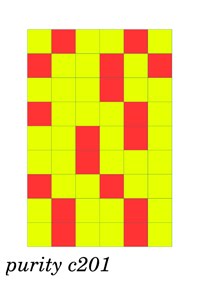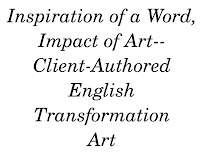For some people buying art is at its best when they can interact with the artist before making their purchase.
With Client-Authored English Transformation Art, interaction with the artist is first and foremost. There are thousands of words in the English language and to find the one that both works as ETA and satisfies the taste, ideals, and aspirations of the client is potentially a real adventure.
We often find ourselves in the position of choosing a word with great care. There are myriad ways we encounter such a situation, whether in personal correspondence, business affairs, or perhaps something more professional--poetry, stories, or plays. But in all of these cases, a single word can rely on a context of other words to perform its duties, since most writing is based on the sentence for meaning. The word is usually atomic. It is a basic unit that doesn't get broken down. Rather, it gets its usefulness by building up into large collections of units. English Transformation Art breaks the atom. Each letter is analyzed as a collection of three component units, breaking the alphabet down into successive three-tuplets until one gets down to an individual letter or the space. Then a code is applied to each three-tuplet. Before the code, the tuplets are the numbers zero, one, and two. The code transforms zero into three ones, one into one one, and two into two ones. Between each coded tuple is a zero. So...
"a" = ||| ||| |
"z" = || || ||
" " (the space) = ||| ||| |||
Unlike normal computer code, this code produces several different lengths of strings for the different letters. This variety results in a great variety of compositions when all the letters in a word are put into the code. The strings for each letter are just put together end to end to get the code for the word. But sometimes the total number of digits for a word is a prime number, so they don't make a nice rectangle. About half of words do make a nice rectangle.
The result is a work of art that truly represents the letters of a word, only broken down into three-tuplets, and then encoded. It breaks open the atom. Then, when it occupies a place on a wall in your home, office, or boardroom, the power of the atom is released as a work of art. The title appears, in English, discretely below the left corner of the work, and it is the word pictured in the artwork. (The bold word shown in the examples does not appear in the actual art.)
Subscribe to:
Post Comments (Atom)






Very interesting to read here in your blog. YOu have great ideas! Go on that way!
ReplyDeleteregards.
http://www.collect-art.com/Danielle-OConnor-Akiyama_work